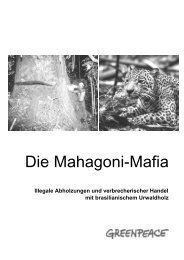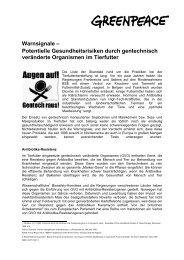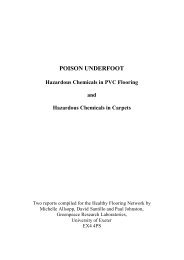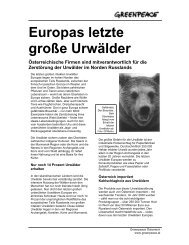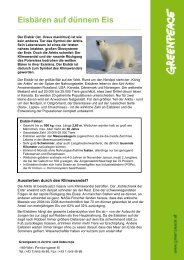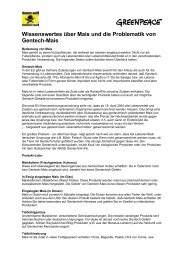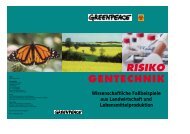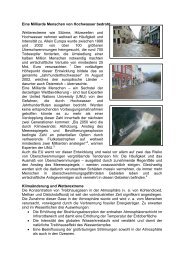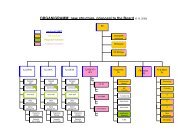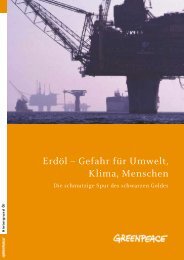Glossary of Fisheries and Aquaculture Terms
Glossary of Fisheries and Aquaculture Terms
Glossary of Fisheries and Aquaculture Terms
Create successful ePaper yourself
Turn your PDF publications into a flip-book with our unique Google optimized e-Paper software.
Pelagic trawl<br />
Quota<br />
Recruitment<br />
Reproductive capacity<br />
operating within this zone. Pelagic fish include species such as<br />
herring <strong>and</strong> sardine.<br />
A trawl designed to work in mid-water, targeting pelagic fish. The<br />
front net sections are <strong>of</strong>ten made <strong>of</strong> very large meshes or ropes,<br />
which herd the fish towards the back <strong>of</strong> the funnel-shaped net.<br />
Pelagic trawls may be towed by one or two (pair trawl) boats.<br />
Associated with bycatch <strong>of</strong> cetaceans <strong>and</strong> other marine mammals.<br />
A share <strong>of</strong> the total allowable catch (TAC) for a given fishery,<br />
allocated to an operating unit such as a country, a vessel, a company<br />
or an individual fisherman (individual quota), depending on the system<br />
<strong>of</strong> allocation. Quotas may or may not be transferable, inheritable or<br />
tradable.<br />
The rate at which a population is added to each year. Recruitment to<br />
an exploitable (i.e. mature) stock is generally through growth <strong>of</strong><br />
juvenile individuals <strong>and</strong>/or migration into the stock area.<br />
(RC). A measure <strong>of</strong> a stock s ability to maintain its SSB at a level<br />
below which recruitment will decline substantially. RC is determined<br />
by comparing the SSB to the biomass limit reference point (B lim ) <strong>and</strong><br />
the biomass precautionary approach reference point (B pa ).<br />
Spawning stock biomass (SSB). The total weight <strong>of</strong> all fish in the population which contribute to<br />
reproduction.<br />
Seamount<br />
Stock<br />
Stock status<br />
A mountain rising from the seabed that does not reach to the water's<br />
surface.<br />
A population from which catches are taken by a fishery. A stock is<br />
usually defined in terms <strong>of</strong> a particular population more or less<br />
isolated from other populations <strong>of</strong> the same species <strong>and</strong> hence selfsustaining.<br />
Assessment <strong>of</strong> the situation <strong>of</strong> a stock. The FAO express this as:<br />
protected, under-exploited, intensively exploited, fully exploited, overexploited,<br />
depleted, extinct or commercially extinct.<br />
Suction/hydraulic dredge Water is shot into sediments <strong>and</strong> displaced shellfish are collected the<br />
in a mesh bag (hydraulic) or sucked to the surface through a pipe<br />
(suction).<br />
Total allowable catch<br />
Trawl<br />
Tropic level<br />
Vulnerable<br />
(TAC). The catch allowed to be taken from a resource in a specified<br />
period (usually a year), as defined in the management plan. The TAC<br />
may be allocated to the stakeholders in the form <strong>of</strong> quotas, as<br />
specific quantities or proportions <strong>of</strong> the TAC.<br />
A funnel-shaped net that is towed through the water by one or more<br />
vessels.<br />
The position that an organism occupies in a food chain, i.e. what it<br />
eats, <strong>and</strong> what eats it.<br />
Not Critically Endangered or Endangered, but facing a high risk <strong>of</strong><br />
extinction in the wild in the medium-term future (IUCN definition).<br />
1 Marine Fish Conservation Network (2008). Forage Fish. www.foragefish.org website. Marine Fish Conservation<br />
Network, Washington, DC, USA. Accessed April 2008 at: http://www.foragefish.org/index.html<br />
2 FAO (2007). The state <strong>of</strong> world fisheries <strong>and</strong> aquaculture 2006 (SOFIA). Biennial report. Food <strong>and</strong> Agriculture<br />
Organization <strong>of</strong> the United Nations (FAO), Rome, Italy. Accessed April 2008 at:<br />
http://www.fao.org/docrep/009/A0699e/A0699e00.htm<br />
Greenpeace Red Grade Criteria for Unsustainable <strong>Aquaculture</strong> 4


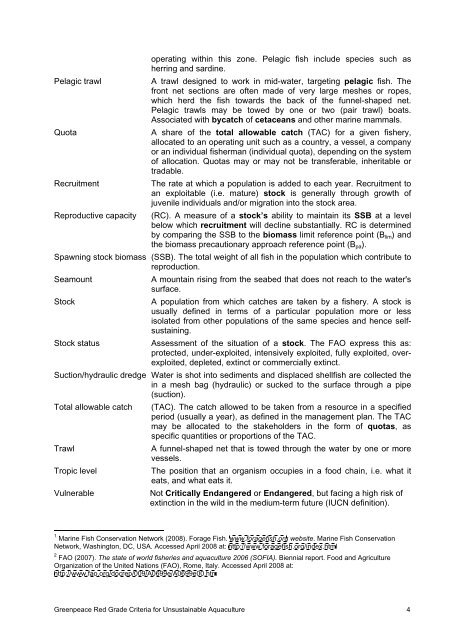
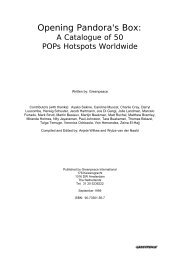
![3. Die Energie-[R]evolution](https://img.yumpu.com/22078498/1/184x260/3-die-energie-revolution.jpg?quality=85)
